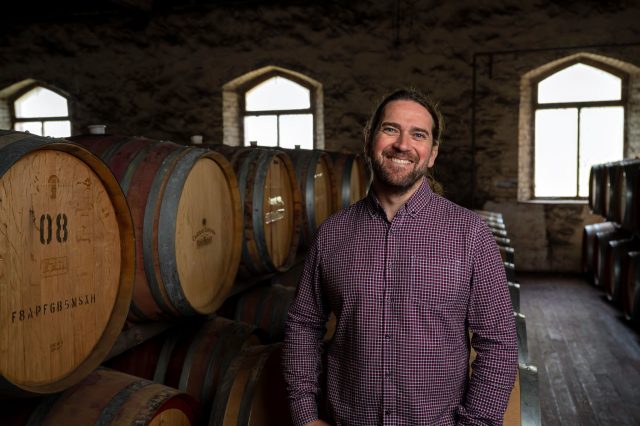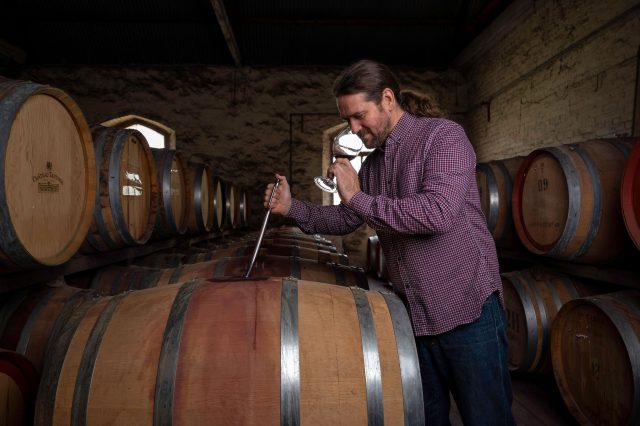This website uses cookies so that we can provide you with the best user experience possible. Cookie information is stored in your browser and performs functions such as recognising you when you return to our website and helping our team to understand which sections of the website you find most interesting and useful.
Master Winemakers Top 100: Jeremy Ottawa
Jeremy Ottawa, winemaker at Barossa’s Château Tanunda, features as one of our top 100 winemakers in this year’s guide. He speaks to db about free-spirited surfing excursions, a heritage of old vines and his secret love of Priorat.

Born in Sydney and raised in a small family but a big community, Jeremy Ottawa was inspired to embark on his career path by beautiful stories of wine around the dinner table. His first winemaking experience was “an intense two years” with Colin Glaetzer at Glaetzer Wines in Barossa, before he moved to St Hallett, where he was mentored by Stuart Blackwell. After 19 years at St Hallett, Ottawa joined the Château Tanunda team in 2020 to look after its premium and Barossa Valley wines. When not in the winery – he also has a natural wine side project, Drifter Wines Co, with his partner Lily – Ottawa can be found rock climbing, surfing or exploring South Australia in his old Land-Rover.
His The Château Cabernet Sauvignon 2021 won a Master medal at the Global Cabernet Sauvignon Masters 2023.
Describe your winemaking approach in no more than three words.
Precision. Elegance. Exploration.
What’s your favourite part of the job?
Working with the very free-spirited John Geber, proprietor of Château Tanunda, and bringing his vision of the Barossa to life through our wines; being a part of the major shift taking place across the region and the wider Australian wine industry to create wines of vibrancy, freshness and charm; and the build-up to vintage after almost a year of preparation in the vineyard, which sets the stage for the wines to come. There’s a great buzz around the region and at our winery as people await the first intake of fruit.
Which aspect of the job keeps you awake at night?
We run a pretty tight ship at Château Tanunda, but we’re at the mercy of Mother Nature when it gets to vintage time. Decisions that we make very early on, like picking dates, for instance, can have huge implications for what the wines will look like in the future. This can be daunting for many winemakers.
What’s your go-to drink at the end of a long day?
As we head into the warmer months of the year, I can’t go past a Negroni. If it is wine, then I reach for a very lightly-chilled glass of The Château Barossa Grenache, the winemaker’s favourite in the Barossa now.
What’s the best piece of advice you’ve ever been given?
My early career mentor Stuart Blackwell always said: “Do it once, do it right.” This philosophy has stuck with me in every aspect of my winemaking.
What was your greatest winemaking mistake?
Mistake is not a word I use. The stepping-stones that create the path of winemaking exploration are what I love. Every decision, right or wrong, teaches you how to push the boundaries of continual improvement to fine-tune the process.
What’s the most important winemaking lesson you’ve learned so far?
Oak can be your best friend or your worst enemy. If you match a wine with the right oak, you can create a thing of absolute beauty and harmony. You can see at its best in our old-vine wines, such as the Château Tanunda 100 Year Old Vines Shiraz.
Which figure outside the world of wine inspires you?
As with wine, I tend to not get fixated on a single figure for inspiration. In one way or another, every person I come into contact with inspires me.

Where would your fantasy vineyard be?
I have a secret love affair with Priorat: rugged terrain, elegant and textural wines, and some truly beautiful people. That said, I do live in the Barossa and make wines for one of the most iconic châteaux in Australia, so life in a way is already a vineyard fantasy.
If you weren’t a winemaker, what would you be doing and why?
If I wasn’t winemaking, I’d have the time to fast-track the building of our completely off-grid beach house and surf whenever possible. I like to think this free-spirited attachment to nature and purity is something that shows through in the wines I make at Château Tanunda.
What’s the most memorable food match you’ve had with one of your wines?
While driving my 1964 Land-Rover in outback Australia, I stumbled upon a fellow enthusiast. I had a bottle of Master-winning The Château Single Vineyard Cabernet Sauvignon 2021 and he had some lamb shanks. We cooked a feast for a few hours over hot coals, watched the sunset over the desert sands, shared stories of breakdowns and enjoyed a perfect food match.
What role does sustainability have to play in a Master-winning wine?
We’re very lucky in the Barossa as we have some of the oldest vines on the planet growing here, which is a testament to the suitability of this region to sustainably grow and maintain top-quality grape vines. We must give credit to the generations of long-term grower families who have been custodians of these vines for more than a century. We’re now working as a region and national industry to learn from each other and explore innovative practices in vine resilience and biodiversity, with the aim of preserving these vines for many more generations to come.
Which type of wine do you drink most regularly?
Lately, I’ve been getting into blends, exploring the creativity of producers to harness all the excitement of individual varieties and blending them together, creating wines that complement and complete. I have a lot of fun with Barossa blends based on Grenache, Shiraz and Mourvèdre like our Grand Barossa GSM. Those varieties are so versatile as blend elements and you really see the signature of the winemaker on them.
Your home is on fire: which bottle do you save?
There are benefits to off-site storage. Firstly, you don’t accidentally drink all your prized wines, giving them time to mature. Secondly, if my house catches fire, it’s one less thing to worry about while making sure my family and pets are safe.


